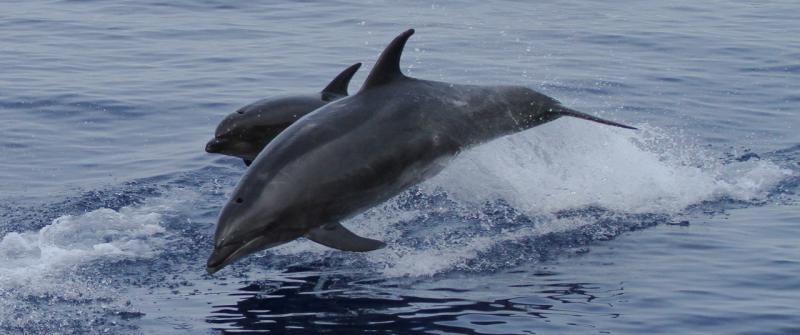When bottlenose dolphins nurse their young, they transfer toxic pollutants such as polychlorinated biphenyls (PCBs) and DDT to their calves through their milk. New research shows that the calves end up with higher concentrations of the toxins than their mothers.
The level of total PCBs measured in two of the three dolphin calves studied are known to cause health problems in other species, the research found. The concentrations can rise especially high in the first-born calf of female dolphins since their milk carries toxins that accumulated in their blubber throughout their lives.
“The newborns are getting the highest concentrations soon after birth, at the time when they are most vulnerable,” said Dawn Noren, a research fishery biologist at NOAA Fisheries’ Northwest Fisheries Science Center and lead author of the new study published in Science of the Total Environment. “Mammals are still developing neurologically after birth, so high exposure early on is a huge concern.”
Toxins such as PCBs, DDT, and flame retardants are known as persistent organic pollutants because they spread through the environment and break down very slowly. That allows them to collect over time in wildlife, where they associate with fat stores.
Killer whales are the largest species in the dolphin family, so these findings may have worrisome implications for endangered Southern Resident killer whales.
Southern residents have relatively high toxins in their blubber compared to other resident, fish-eating killer whales. Other studies have found that as many as two-thirds of Southern Resident killer whale pregnancies are unsuccessful.
Southern Resident calves often die before they reach a year old, and some research has suggested that toxins may be a contributing factor. However, scientists struggle to pin down the contributing factors because they cannot collect samples of blood or milk and rarely, if ever, find dead or dying calves.
Noren began studying dolphins for clues as to how toxins move through the bodies of marine mammals because of their relationship to killer whales. This research relied on dolphins maintained in San Diego Bay by the U.S. Navy’s Marine Mammal Program. They are trained to cooperate with researchers gathering samples for the study.
Three of the six adult female dolphins examined for the study were born in the Navy-managed program; the others had been collected from the wild. Regardless of their origin, the female dolphins, like marine mammals in the wild, accumulated the pollutants from their food.
“This study cannot be conducted on wild dolphins or killer whales. Navy animal studies allow us to more precisely track how the contaminants move between mothers and offspring,” Noren said.
Also see:
–CBB, Dec. 3, 2020, STUDY OFFERS COMPREHENSIVE LOOK AT MULTITUDE OF MORTAL HUMAN, ENVIRONMENTAL THREATS FACING KILLER WHALES https://columbiabasinbulletin.org/study-offers-comprehensive-look-at-multitude-of-mortal-human-environmental-threats-facing-killer-whales/

